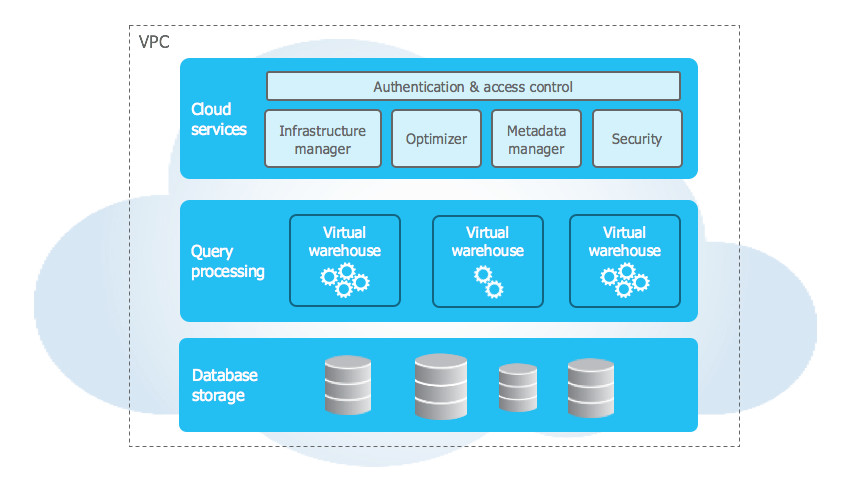Snowflake To Integrate with Google Cloud Platform; Continues To Expand Multi-Cloud Strategy
This fall, Snowflake will preview the integration of its cloud-built data warehouse with Google Cloud Platform. Snowflake’s support for Google Cloud is the latest addition to the company’s multi-cloud offering portfolio. IDN speaks with Snowflake vice president Christian Kleinerman.
by Vance McCarthy
Tags: analytics, AWS, Azure, cloud, data warehouse, Google, multi-cloud, Snowflake,

vice president

"Our goal has long been to bring our cloud-built data warehouse to as many clouds and regions as possible. Now, we’re now coming to Google Cloud."
This fall, Snowflake will preview the integration of its cloud-built data warehouse with Google Cloud Platform. Snowflake’s support for Google Cloud is the latest addition to the company’s multi-cloud offering portfolio.
“Our goal has long been to bring out cloud-built data warehouse to as many clouds and regions as possible. Now, we’re now coming to Google Cloud based on what are customers asking for,” Christian Kleinerman, Snowflake’s vice president of product told IDN. The coming support for Google Cloud will join Snowflake’s offerings for Amazon AWS and Microsoft Azure.
Snowflake execs say their support for Google Cloud signifies a growing interest in multi-cloud architectures for their data warehouse as a service (DWaaS).
Snowflake CEO Frank Slootman said in a statement:
“As more organizations adopt a multi-cloud strategy, it’s become important for businesses to have a unified data source. We’re excited to work with Google Cloud to provide the flexibility, performance, and unlimited concurrency that customers require to power their businesses.”
Snowflake allows companies to bring together diverse data into one system for core data functions -- data warehousing, query processing, and analytics. Snowflake enables seamless and secure data integration throughout across platforms via its cloud-built data warehouse.
Perhaps even more valuable, Snowflake’s approach offers cloud-friendly support for SQL database models and user queries.
“The model of the relational SQL database has been established for 20-30 years - and it remains a widely accepted model. What Snowflake has done is [leverage] the SQL database model for human and machine data – but without the limitations of scale and performance.,” Kleinerman said. “We looked at every database layer, as well as the storage engine and the query compiler and re-imagined how to build these components for the cloud.”
The result is scale, performance, security and, perhaps most importantly, familiarity and ease of use for data professionals and non-technical business users, he added.
Architecturally, Snowflake is a unified solution that separates compute and storage, enabling you to scale compute and storage resources independently and deliver concurrency without contention. Snowflake’s approach allows users to capture the benefits of seamless cloud elasticity (even across multiple clouds), while only paying for the compute and/or storage they use.
The result: Snowflake offers seamless support for multiple clouds, as well as allows companies to bring together their diverse data into one system for data warehousing, query processing, and analytics. All this is available from queries using familiar ANSI SQL semantics, Kleinerman added.
Snowflake is an analytic data warehouse provided as Software-as-a-Service (SaaS). Snowflake provides a data warehouse that is faster, easier to use, and far more flexible than traditional data warehouse offerings.

Rather than using big data platforms such as Hadoop, Snowflake uses a modern SQL database engine, specially designed for the cloud. To the user, Snowflake has many similarities to other enterprise data warehouses, but also has additional functionality and unique capabilities.
When data is loaded, Snowflake reorganizes that data into its internal optimized, compressed, columnar format. Snowflake stores this optimized data in cloud storage.
Snowflake also manages all aspects of how this data is stored — the organization, file size, structure, compression, metadata, statistics, and other aspects of data storage are handled by Snowflake. The data objects stored by Snowflake are not directly visible nor accessible by customers; they are only accessible through SQL query operations run using Snowflake.
Query execution is performed in the processing layer. Snowflake processes queries using “virtual warehouses”. Each virtual warehouse is an MPP compute cluster composed of multiple compute nodes allocated by Snowflake from a cloud provider.
Each virtual warehouse is an independent compute cluster that does not share compute resources with other virtual warehouses. As a result, each virtual warehouse has no impact on the performance of other virtual warehouses.
From Google’s point of view, GCP’s embracing of Snowflake arises from “growing demand from customers to operationalize Snowflake on GCP for better performance and reliability,” according to a blog post from GCP vice president Kevin Ichhpurani.
Snowflake’s Road Forward To Multi-Cloud
Snowflake’s support for multi-cloud also is founded upon an architecture that pays attention to the intelligent use of abstraction across multiple layers.
In his blog post, Snowflake’s Michael Nixon explained it this way:
Snowflake senior engineer, Polita Paulus, whose team created one of the first single code base data warehousing functions to operate across multiple clouds, says the key to its flexible application lies in abstraction layers.
These are layers of code that ensure consistent function, regardless of how the data warehouse interacts with a particular cloud.
Think of it as building a car that you can drive either on the left side or right side of the road. Abstraction code layers make it possible to move the steering wheel from one side to the other, as needed, to accommodate the driving rules of any nation. They give you the ability to seamlessly adapt the controls to make sure nothing changes in the driving experience – or the safety, fuel efficiency, and speed of the car.
Snowflake on GCP is set to launch in preview in Fall 2019, with general availability scheduled for early 2020.
Related:
- Cloud Migration Isn’t Going Away: 4 Warning Signs a Change is Needed
- Qumulo Latest Driver Improves Storage Management of Kubernetes Apps and Workflows
- Cloudflare Unifies Email Security and Zero Trust with Acquisition of Area 1 Security
- 5 Ways Companies Can Protect Themselves When AWS Goes Down
- Astadia Joins the AWS Mainframe Modernization Service
All rights reserved © 2025 Enterprise Integration News, Inc.



